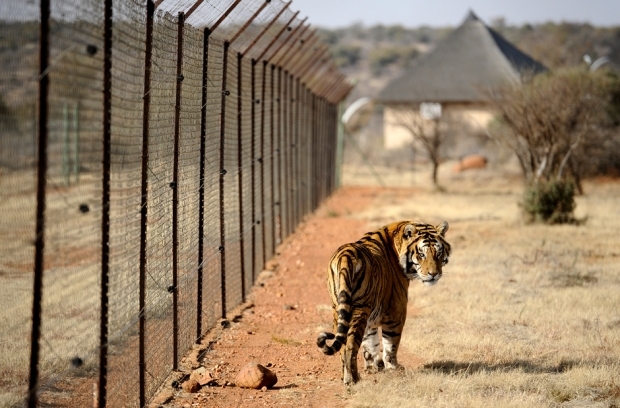China is under pressure to regulate its rampant trade in illegal ivory and tiger parts ahead of the Convention on International Trade in Endangered Species (CITES), opening this weekend in Bangkok.
It has also been accused of quietly stimulating domestic markets for tiger skins and body parts, with more than 5,000 captive-bred tigers held in Chinese farms and zoos.
Undercover investigations by the Environmental Investigation Agency (EIA) reveal a legalized domestic trade in the skins of captive-bred tigers, sold as luxury home décor, which is stimulating the poaching of wild tigers and other Asian big cats as cheaper alternatives.
In addition, EIA suggests a secret government notification on the use of the bones of captive-bred tigers is being used to justify the manufacture of tiger-bone wine (where tiger bone is soaked in wine but not listed as an ingredient and returned to the stockpile to be available for inspection).
“The stark contradiction between China’s international posture supporting efforts to save the wild tiger and its inward-facing domestic policies which fuel demand and ultimately drive the poaching of wild tigers represents one of the biggest cons ever perpetrated in the history of tiger conservation,” says EIA’s tiger campaigner Debbie Banks.
The U.N.-backed CITES aims to ensure that the international trade in wildlife and plants—now worth billions of dollars—does not threaten their survival. As a result, more than 30,000 species of animals are given protection, obliging member countries such as China to crack down and regulate against any trade in those species.
China signed and ratified CITES, a voluntary agreement, in 1981 and has since made high-profile commitments such as banning the tiger and rhino horn trade in 1993.
However, as well as new concerns about the tiger trade, China stands accused of failing to carry out its commitment to regulate the legal domestic ivory trade adequately.
“The huge consumer power of China makes the country a huge driver of wildlife trade in many many commodities,” James Compton from the wildlife trade watchdog TRAFFIC told chinadialogue. “Some of this trade is illegal—for example, China has the largest illegal ivory market in the world.”
Some reports estimate that more than half of China’s domestic legal ivory businesses are involved in the illegal ivory trade
With reports that the ivory trade is on the rise again—wiping out elephants in more and more places in Africa—there are also questions about the effectiveness of international agreements like CITES.
However, Compton says the fault lies with countries for failing to crack down on the wildlife trade.
“CITES is an intergovernmental agreement, and potentially a very powerful one. The issue is not so much about the Convention itself but about the commitment, will, and ability of the governments who have signed the Convention to implement its measures adequately. If CITES didn’t exist, it would be necessary to invent it,” he says.




